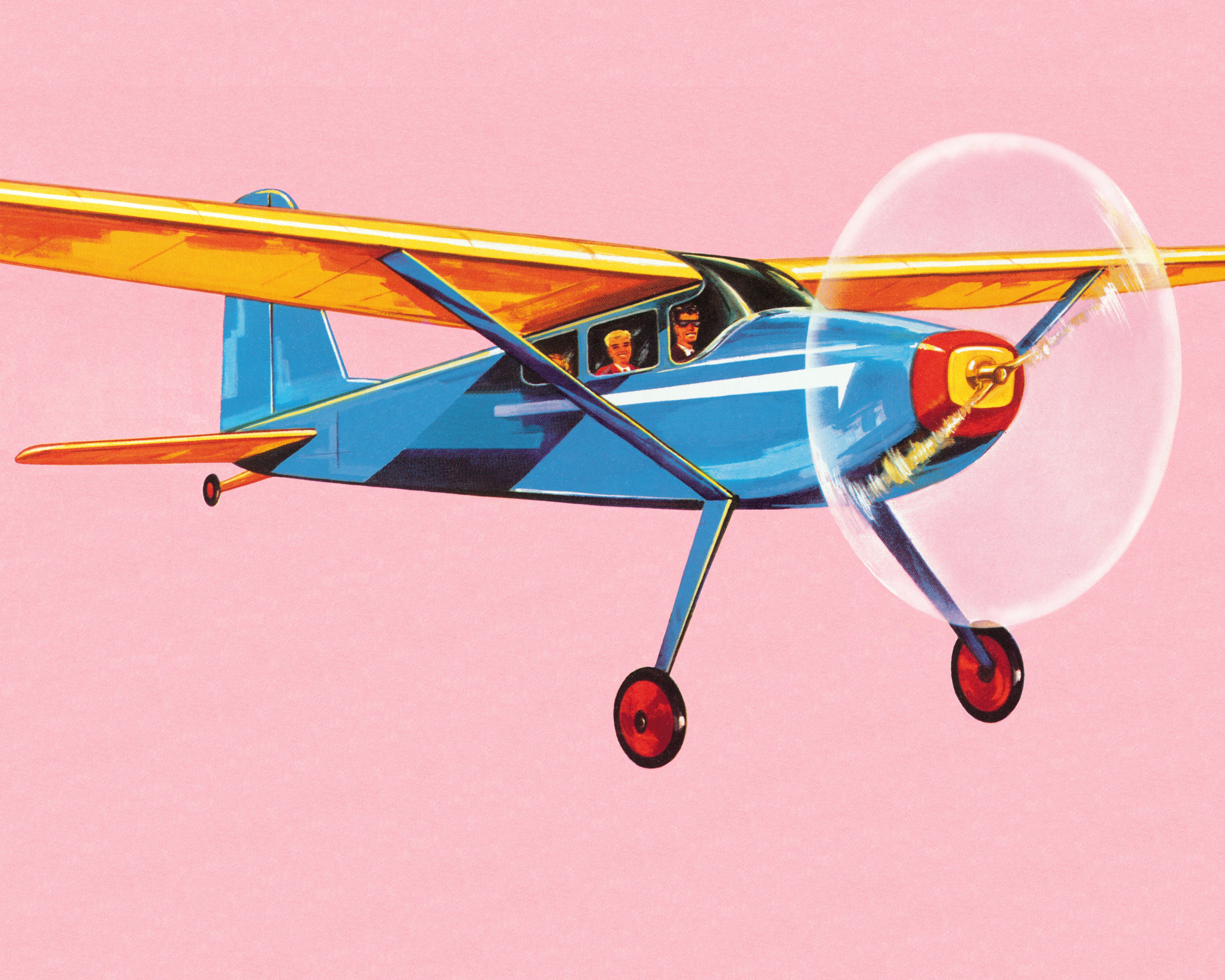
The holidays didn’t go as planned for thousands of U.S. air travelers. Delays and cancellations started piling up on Christmas Eve and trended steadily upward through the new year, according to data from the flight-tracking company FlightAware.
From December 24 to January 3, airlines delayed more than 71,000 U.S. flights and flat-out canceled more than 18,000. As of this writing, disruptions appear to have peaked on January 3, with more than one-third of flights delayed and about 13 percent canceled — though they remain higher than normal.
“It was a bad mixture of several bad situations,” said Max Li, a visiting assistant professor of aerospace engineering at the University of Michigan.
Severe winter storms rocked several regions of the country just as a surge of the coronavirus variant omicron sickened flight crew and air traffic control staff.
“You weren’t ready.”
“On top of that, it’s a high-demand season,” said Li, noting that traffic typically picks up with people traveling for the holidays and then getting back to business with the new year. “I’m even guilty of that.”
The holiday meltdown is the most recent disruption in what has been a rocky six months for the airline industry. In July, six of the nation’s 10 largest airlines canceled or delayed more than 30 percent of their flights, according to the U.S. Department of Transportation’s December Air Travel Consumer Report. In early October, Southwest Airlines canceled more than 2,500 flights during the long weekend encompassing Columbus Day/Indigenous Peoples’ Day. American Airlines then canceled a similar number of flights around Halloween.
“Currently, the system is very fragile,” said Li.
Airport anxieties
Airlines are running so short-staffed that when weather or illness hits, it can take days to recover. In the best of times, flight scheduling is complex, he added, and outdated computer systems aren’t up to pandemic challenges on top of the usual vagaries of weather and mechanical problems.
My oldest son got married in Austin in mid-October and, with friends and family scheduled to fly Southwest, we paid close attention to the airline’s announcements. By mid-week, the airline was saying that its operations were back to normal after the shaky holiday. Still, on Thursday, some guests hadn’t arrived as scheduled. My youngest son was especially glum as flight delays and a missed connection left him stranded in the airport in New Orleans while his brother’s bachelor party went on without him.
We were doubly frustrated because explanations for the disruption didn’t make sense. In a published statement, Southwest blamed the weather and other “external constraints.” According to the Federal Aviation Administration, the problems were concentrated in Jacksonville, Florida, and lasted only a few hours on Friday, October 8. How could a bad night in Florida result in days of cancellations?
“I’m not going to cite any airline specifically,” said William J. McGee, a former airlines operation manager.
“But it’s clear that airlines are lying about why flights are being severely delayed and canceled.”
Companies are less culpable both legally and in the court of public opinion for factors such as weather that are outside their control, said McGee, who is now a passenger advocate and authored the book Attention All Passengers. Since airlines self-report data on the reason for delays and cancellations to the FAA, they are incentivized to be less than truthful.
The travel disruptions that affected our family and so many others were largely avoidable, said McGee. As part of a series of stimulus bills, the federal government gave passenger carriers $54 billion to maintain their workforce during the pandemic.
With tens of thousands of flights canceled in the last six months, McGee said he thought that the airlines have broken their promise to taxpayers: “We gave you this money with a condition that you’d be ready, and you weren’t ready.”
Flight status: Delayed
While some disruptions are unavoidable, airlines could have better used the federal funds to ready equipment and staff for when air travel demand bounced back, said Li. But beyond that, companies need to update their flight scheduling technology to become more resilient to the challenges that inevitably pop up, he said. Among other things, this means using more sophisticated algorithms to predict demand and increasing data-sharing among airlines.
“At the end of the day, Southwest and American could have had beautiful schedules planned out for those two weekends,” said Li. “But if they weren’t able to tackle disruptions well, then, it really didn’t matter.”
To grasp how a spate of bad weather can blow up flight schedules for days, it helps to understand how airlines route flights. Before the Airline Deregulation Act of 1978, the federal government dictated where and when airlines flew, which was mostly from point A to point B. After deregulation, most carriers, including American, Delta, and United, went to a hub-and-spoke system, routing many of their flights through centralized airports. Southwest and Jet Blue take a hybrid approach, routing some flights point to point and others through a few major cities.
“It’s a bit of a cascading effect.”
The hub-and-spoke system is useful for serving smaller cities, said Li. Too few people may want to fly from Champaign, Illinois, to Denver, Colorado, for example, to support a regular direct flight. But by routing flights through Chicago, an airline can consolidate all the traffic from smaller cities going to Denver into one flight on a larger aircraft.
While it’s more complex to schedule flights in a hub-and-spoke system, it’s ultimately more cost-effective for airlines, which can concentrate staff and resources at the hubs said Seock-Jin Hong, associate professor in the Department of Logistics & Operations Management at the University of North Texas.
Of course, “when the problem happens in that one city,” said Hong, “it causes huge problems all over the network.”
That’s what happened to American Airlines in late October when high winds shut down three of five runways at the Dallas-Fort Worth International Airport, the airline’s largest hub.
Southwest has different vulnerabilities, said Martin Dresner, chair of the Logistics, Business, and Public Policy Department at the University of Maryland. The airline lacks strong hubs with spare crews and planes that other airlines use to pick up the slack when something goes awry (unless, as in the American example, the hub is affected). When bad weather grounded flights in Florida, a big area for Southwest, those planes and crews were then out of position for the next flights scheduled across the country — and so on.
“It’s a bit of a cascading effect,” said Dresner, who also heads the Air Transport Research Society, a nonprofit dedicated to transportation research.
“Unless you have some surplus crew and surplus aircraft available, then you’re going to be in a very tight situation.”
Breaking point
Before the pandemic, the U.S. airline industry was operating at maximum capacity without the backup crews and aircraft that were once the norm said McGee, the passenger advocate. So when things went wrong, there was little hope of quick recovery. That situation was made worse when travel ground to a halt in the spring of 2020. Airlines mothballed planes, furloughed workers, and incentivized people to leave with early retirement and buyouts packages.
These realities were probed in a recent hearing of the U.S. Senate Committee on Commerce, Science, and Transportation. Doug Parker, CEO of American Airlines, insisted that his airline, at least, is adequately staffed. When weather disrupts schedules, American relies on pilots and flight attendants to pick up extra shifts. He did acknowledge, though, that workers have been less willing to take extra hours during the pandemic, given the Covid-19 risks and increasingly unruly passengers.
McGee was critical of the industry’s response to the pandemic. He said the airlines failed to prepare for the inevitable surge of air travel after vaccines rolled out in early 2021. “The fact is that taxpayer bailout money was specifically designed to prevent staff shortages, and yet U.S. airlines encouraged early retirements, staff downsizing, cutting of hours, etcetera,” he wrote in an email. As McGee put it, this was a failure of airline planning departments, which have an obligation to anticipate and prepare for variability.
“Their job is to analyze global big-picture trends,” he added, “and plan accordingly for it.”
“I... question how technology can address the current crisis when there simply are more seats being sold than the airlines have the capacity to operate.”
The pandemic has mucked up nearly everything. My son and daughter-in-law canceled their originally planned wedding in 2020 after Covid-19 rendered it too dangerous. But we adjust. They exchanged vows in the presence of a few friends on a mountain in Colorado and followed up with a formal wedding in Austin last fall. We enjoyed a wonderful celebration outside with vaccinated guests. And, although my youngest son and a few others missed some of the pre-game activities, everyone arrived in time for the main event.
Why are some airlines still struggling to adjust, given federal funds to cover staffing? The experts I spoke with pointed to several actions the industry could take to improve flight reliability, including updating their data processing.
The pandemic has underscored how airline scheduling needs to become more dynamic, said Renzo Vaccari, a senior vice president at Amadeus, a Spanish company that provides information technology to the aviation industry. In the past, airlines have used historical data to predict future demand, but that’s less helpful given the ups and downs of the industry in the last two years. Vaccari noted that the industry could make more accurate predictions by integrating nontraditional sources of information such as air traveler search and shopping patterns.
Upgrade
In a recent white paper, Amadeus proposed numerous other technology upgrades. Instead of tweaking schedules from the previous year, for example, airlines could start fresh using more sophisticated algorithms that optimize schedule planning based on a myriad of variables.
In addition, Li said that both the airlines and air traffic control systems at the airports need to do a better job of analyzing data in real-time to figure out what to do when those optimized schedules fall apart due to weather, crew shortages, or any number of other inevitable problems. The airlines already collect vast amounts of data on their planes, passengers, crew, weather, and more, but the modeling systems are outdated.
It’s a new paradigm to think about how to harness data to manage disruptions in real time, said Li. And doing so will require airlines to make a financial, philosophical, and strategic shift in their perspective.
Furthermore, he said, “I would like to see more collaboration, more data sharing between the FAA and the airlines as well as amongst the airlines.” He admits, though, that more research is needed to determine how to share data without revealing sensitive business practices.
“I agree wholeheartedly that airlines need to invest in upgrading their technology, and in many different areas,” McGee wrote in an email.
“However, I also question how technology can address the current crisis when there simply are more seats being sold than the airlines have the capacity to operate.” No software in the world can ameliorate the fundamental problem of not having enough employees, he said.
Ultimately, said McGee, airlines don’t have the incentive to invest in measures that would make travelers’ lives easier. They face virtually no penalties from regulatory agencies, he points out.
And while deregulation was supposed to increase competition by making it easier for new airlines to enter the market, in fact, companies have just consolidated over the last 40 years. He points out that there were 11 major domestic airlines in 1978 and now there are only four — American, Delta, Southwest, and United.
Under federal law, airlines are required to offer refunds for canceled or significantly delayed flights, although McGee points out that companies still owe passengers more than $10 billion in refunds on flights canceled during 2020. He’s long lobbied for Congress to create a passenger bill of rights, like those in many other countries, that would spell out exactly what U.S. travelers are entitled to in terms of compensation, meals, and accommodations when planes don’t fly on time.
As for 2022, while passengers are still likely to experience some frustration, Li said he is cautiously optimistic. For the first time in 14 years, two new carriers, Breeze Airways, and Avelo Airlines launched last year. This could spur more competition in routes to smaller cities. And the combination of the pandemic and a changing climate may force airlines to upgrade their technology to become more resilient to disruption and fluctuating demand. The last two years have caused an upheaval in standard practices, he said: “I’m hoping it’s for the better.”
As we wrapped up our conversation, he reminded me not to take for granted the ability to bring people from all over the country to bear witness to a lovely little ceremony in the woods outside of Austin. “You sit in this metal tube for three hours, and then you’re at a completely brand new city,” he said. “I think people have lost sight of just the amount of background, people, and systems that make sure you get from A to B safely and efficiently.”
UPDATE: In an earlier version of this piece, Carr noted her youngest son got stranded in Charlottesville, North Carolina. Charlottesville is located in Virginia, but the piece has been corrected to note Carr’s son was actually stuck in New Orleans.
This article was originally published on Undark by Teresa Carr. Read the original article here.







